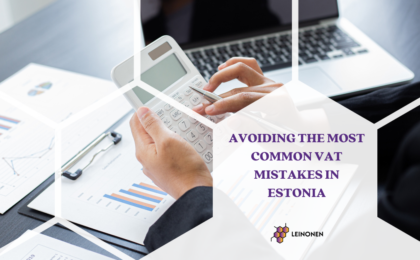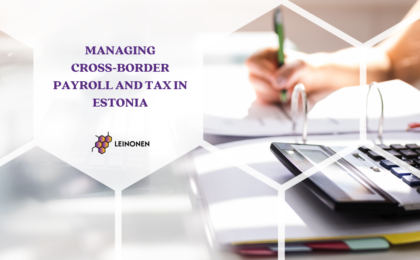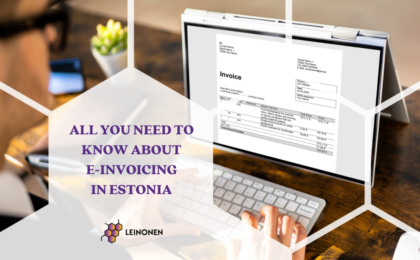The threshold of 16,000 euros currently valid in Estonia has been in force since 1 April 1995. The kroon was the effective currency at the time and the amount was 250,000 kroons. Different thresholds are applied in Member States. The VAT Directive stipulates that the threshold the Member States may establish is up to 5000 euros. However, most Member States have higher thresholds. This is possible due to the differences that were in force before or due to the special authorisation the Member States have requested from the European Council. Those who are interested can find the amounts of the thresholds in the annex to the explanatory memorandum. Article 287 stipulates an exception for Estonia, which allows Estonia to apply tax exemption to taxable persons whose annual turnover threshold does not exceed 16,000 euros, meaning that persons whose turnover does not exceed this threshold do not have to register themselves as VAT payers. Article 395 of the Directive states that the authorisation of the European Council must be obtained in order to increase the threshold. The Directive also stipulates that granting the authorisation must be decided within eight months of submission of the application to the European Commission. Estonia submitted the relevant application to the European Commission on 12 May 2016. One of the documents considered by the European Council when making the decision is the proposal of the European Commission of 29 October 2004 to simplify the obligations related to value added tax, according to which Member States are permitted to increase the threshold to up to 100,000 euros.
The second of the planned amendments concerns domestic reverse charge. The objective of the domestic reverse charge procedure is to combat tax fraud. According to the currently effective regulation, reverse charge is applied in Estonia to the turnover of immovables if the tax authority has been informed of the voluntary taxation of the immovable. Waste metal and precious metals are also subject to reverse charge. The plan is to expand the nomenclature of goods subject to reverse charge. In the future, metal products with combined nomenclature codes of 7208–7220, 7222, 7225, 7226, 7228, 73011000, 730300–7306, 73081000, 73082000, 73121061, 73121069, 731420 and 73143900 will be subject to reverse charge.
As the Ministry of Finance explains in the explanatory memorandum, this amendment is necessary to reduce tax fraud in this area. According to the tax authority, there were 357 commercial undertakings in Estonia as at 7 March 2016 that were engaged in the sale or acquisition of such metal products where major tax fraud has occurred. Approximately 70 companies among them acquire goods from buffer companies. VAT loss in 2015 amounted to ca 7.2 million euros. Companies operating in the metal sector estimate that ca one-third of certain metal products are sold using buffer companies. Article 199a(1)(j) of the Directive grants Member States the right to also establish reverse charge for raw metals and semi-manufactured metal products. Subsection (2) of the same Article states that the VAT Committee must be informed about the use of special measures. The Directive states that reverse charge may be used until 31 December 2018, whilst the reverse charge must be applied for at least two years. If Estonia does not apply the amendment from 1 January 2017, then it can no longer proceed from Article 199a(1) in the establishment of reverse charge, but has to request the authorisation of the European Council pursuant to Article 395 of the same Directive in order to establish the reverse charge. Obtaining the authorisation may take up to eight months. As we all remember, the European Council does not grant its authorisation lightly. The last application filed by Estonia for applying reverse charge to precious stones was rejected and the legal amendment was therefore never made.
Based on the explanatory memorandum prepared by the Ministry of Finance, the draft was not preceded by a legislative intent. A legislative intent is not required if the processing of the draft act is justifiably urgent and if the implementation of the draft act as an act does not bring about significant legal change or other significant impact. Raising the threshold from 16,000 euros to 40,000 euros does not bring about any compulsory behaviour for enterprises, but increases the circle of persons who have a choice when it comes to registering as a VAT payer. The Ministry of Finance is of the opinion that the draft act is urgent, as the enterprises in the metal sector who follow the law when paying taxes are not competitive in selling their products. If Estonia does not implement the amendment from 1 January 2017, it will have to apply for the authorisation of the European Council to establish the reverse charge and processing draft act may then take over a year, causing additional financial damage to the enterprises and reducing the state’s revenue further.
§ 41 of the Taxation Act stipulates that in general, there must be at least six months between the adoption and entry into force of an act on taxation and the amendment thereof. The explanatory memorandum to the act for amendment of the Taxation Act states that said provision allows the legislator to only adopt acts on taxation with a shorter deadline for entering into force in justified cases, which include dealing with acute cases of tax fraud that need to resolved fast.
Based on the position of the Ministry of Finance, we can expect the intended amendments to enter into force rather rapidly. This means that the provisions on the application of the reverse charge to metal should enter into force on 1 January 2017 and the increase of the threshold for registering as a taxable person on 1 January 2018.



